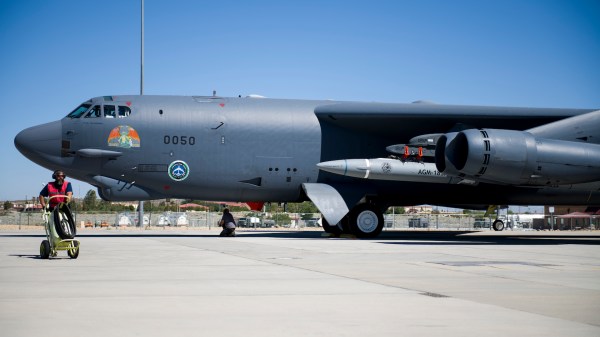Air Force secretary tight-lipped about new Phoenix Ghost suicide drone

The American-made Phoenix Ghost loitering munition is being used to great effect in the Ukraine-Russia war, U.S. officials say, but the head of the service that developed the weapon is being tight-lipped about its capabilities and the Pentagon’s plans for employing the system for its own use.
The Department of Defense is keen on acquiring new loitering munitions — also known as suicide drones, kamikaze drones or tactical unmanned aerial systems (UAS). In April, the Pentagon turned heads when it revealed that the Air Force had recently developed a new kamikaze drone called the Phoenix Ghost that it planned to send to Ukraine to support its war effort against Russian invaders.
But a great deal of secrecy still surrounds the weapon, and the Pentagon has been much more mum about it than it has for many of its other drone programs.
“I actually can’t say very much about Phoenix Ghost. I apologize but there’s not much I can say publicly about it,” Air Force Secretary Frank Kendall told FedScoop on Tuesday at the Potomac Officers Club’s annual Air Force Summit.
Kendall’s comments came after FedScoop asked him whether the system could be air-launched, how he envisions the service using the weapons, and whether the Defense Department was buying them in large quantities for the Air Force. He declined to disclose any of that information.
Kamikaze drones are different than traditional munitions because of their ability to loiter and search for targets. They are also different than other UAS strike platforms in that they are primarily designed to go on one-way missions and crash into their targets rather than launching missiles at them.
The development of the Phoenix Ghost was overseen by the service’s Big Safari office — which works on special projects — in partnership with AEVEX Aerospace.
Although Pentagon officials have said little about the weapon’s capabilities other than it can be used for strike missions and for intelligence, surveillance and reconnaissance (ISR), they have touted the platform’s success on the battlefield in Ukraine.
“The Ukrainians have been making excellent use of the Phoenix Ghost system,” a senior Defense official said last week during a background briefing about the latest round of U.S. security assistance for Ukraine, according to a DOD news release.
Last week, the Biden administration announced that it had committed to sending up to 580 additional Phoenix Ghost platforms to Ukraine. The administration had previously announced plans to provide up to 121 of the systems to Ukrainian forces, which have been trained on how to operate them.
Notably, the U.S. government plans to buy these additional Phoenix Ghosts from the manufacturers using Ukraine Security Assistance Initiative (USAI) funds, rather than draw them from existing DOD stocks.
“This action allows us to go out and procure from industry additional capability. That’s where USAI is different from drawdown. This is actually a procurement action. And with the Phoenix Ghost system, what we’ll be able to do is ensure steady deliveries of this capability starting in August to ensure that the Ukrainian armed forces have a continual supply of this capability,” the senior defense official said.






